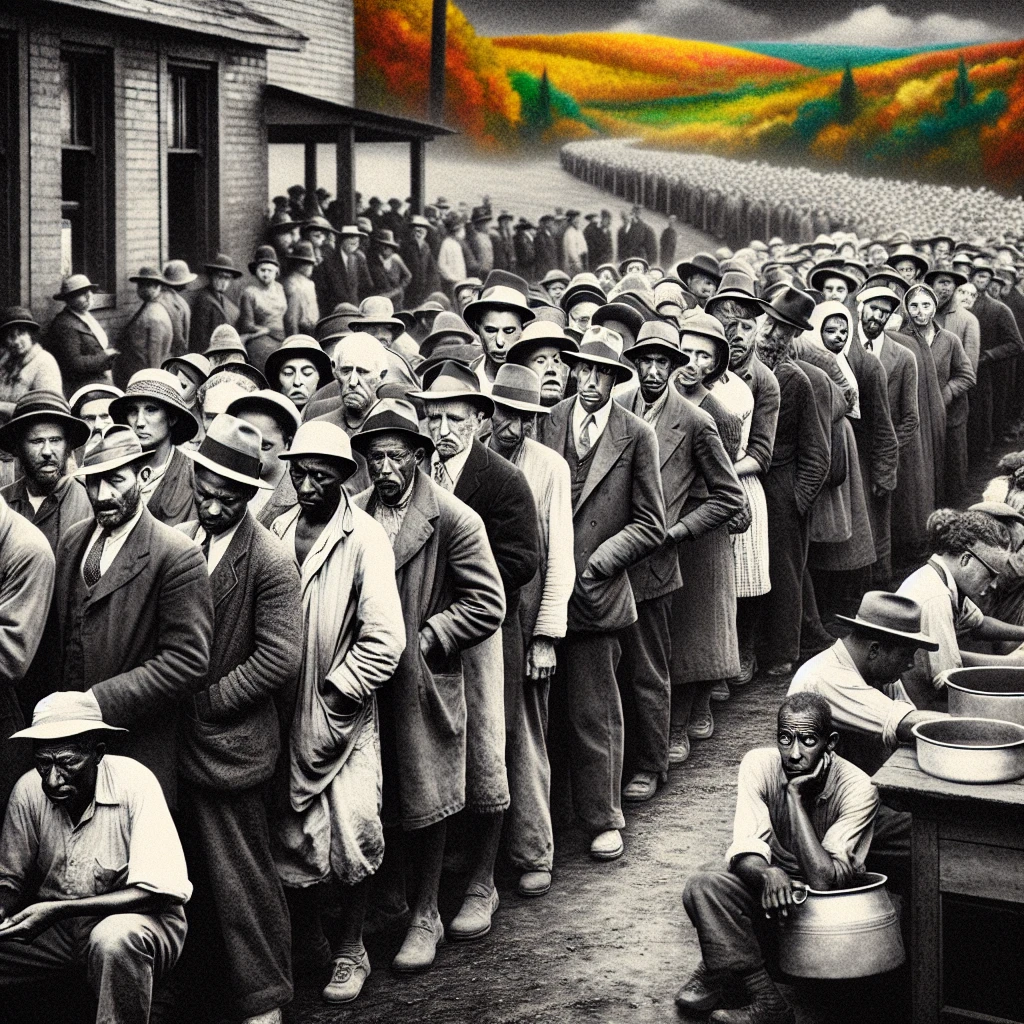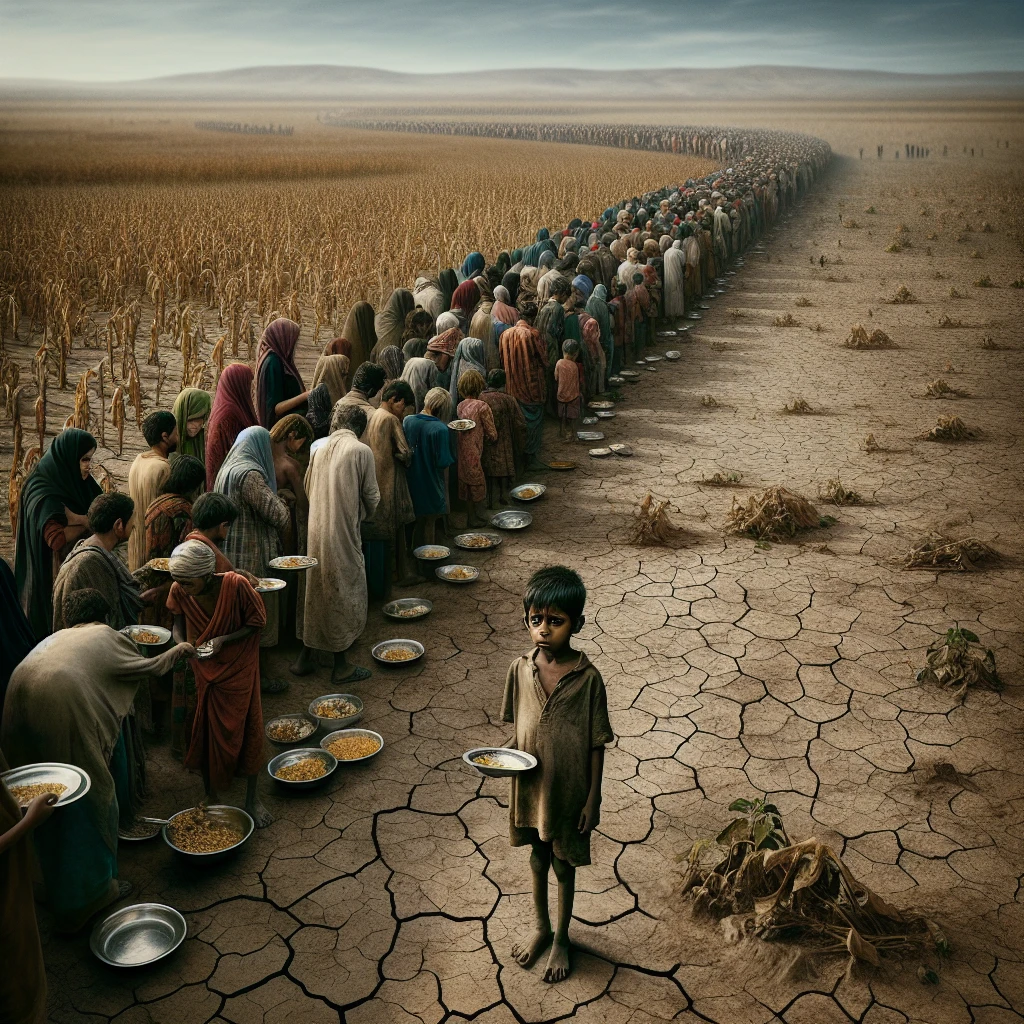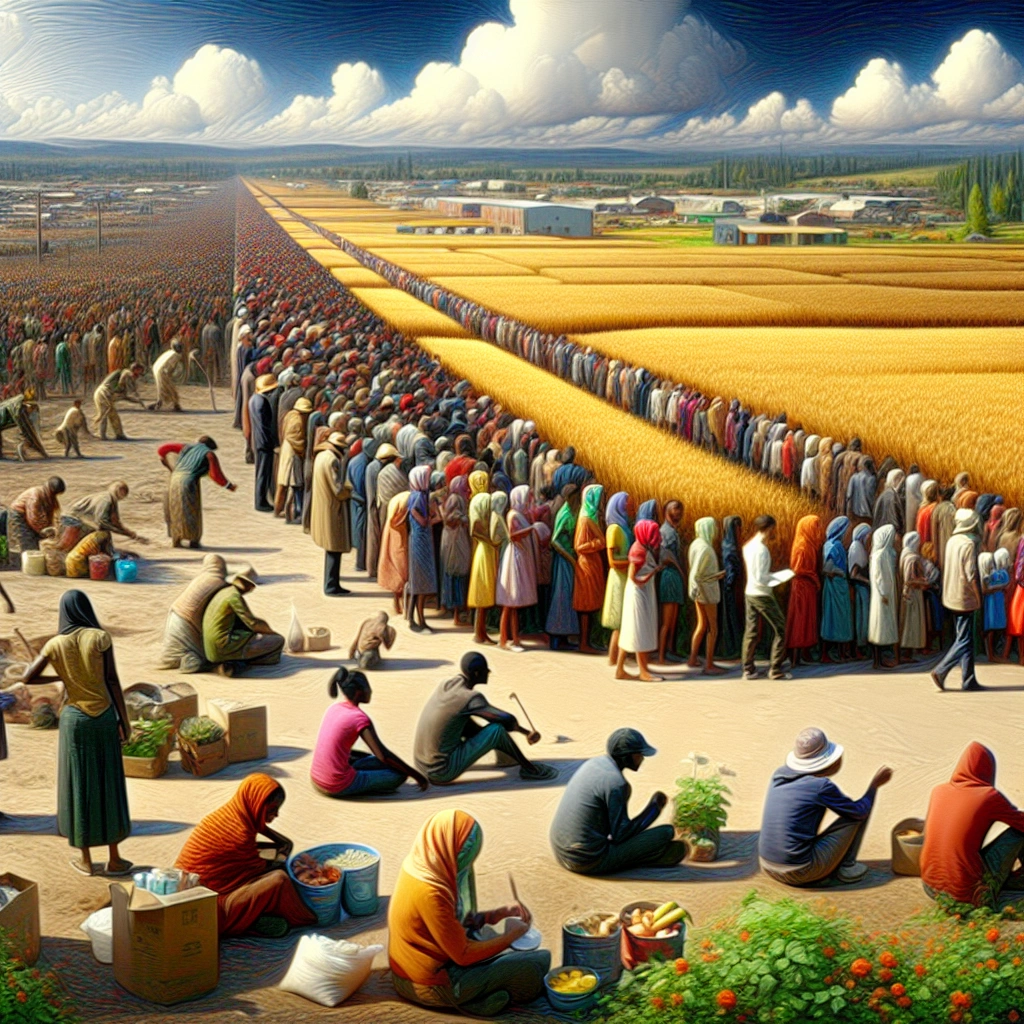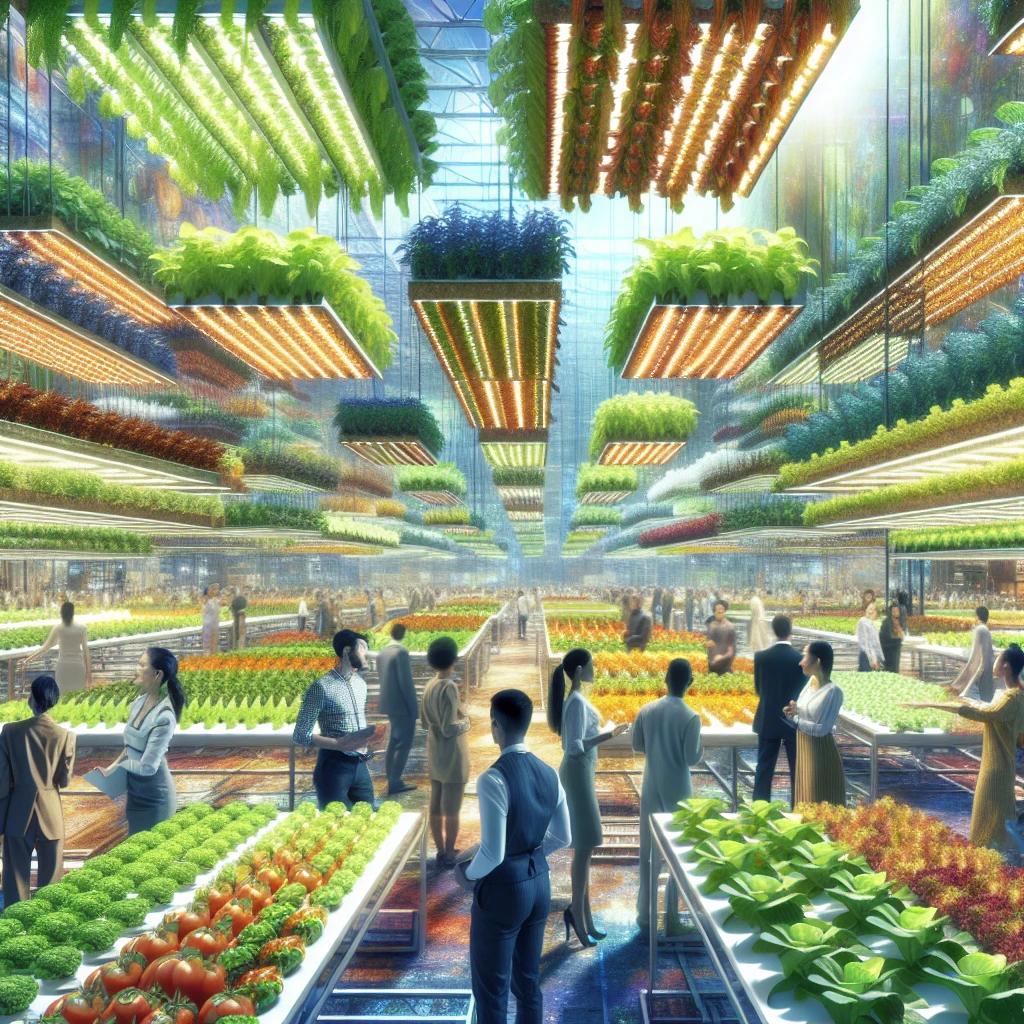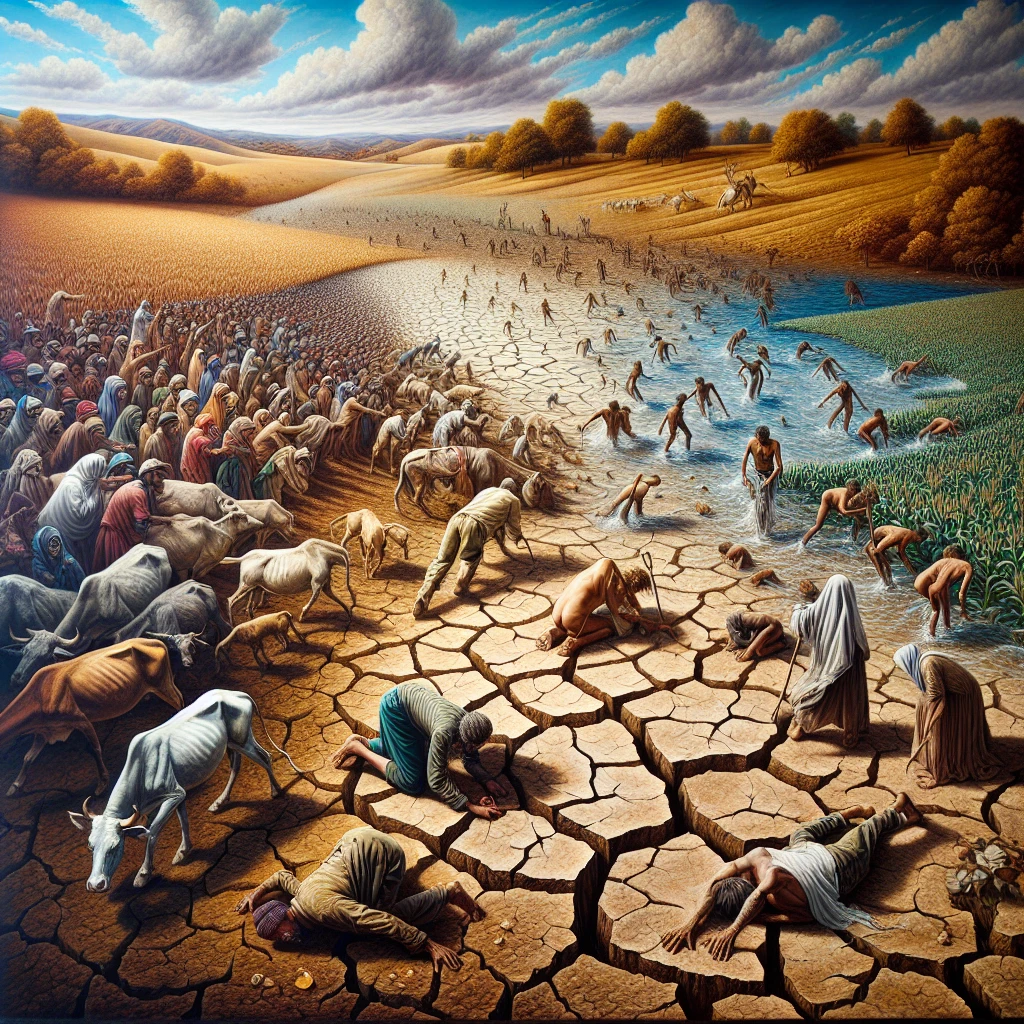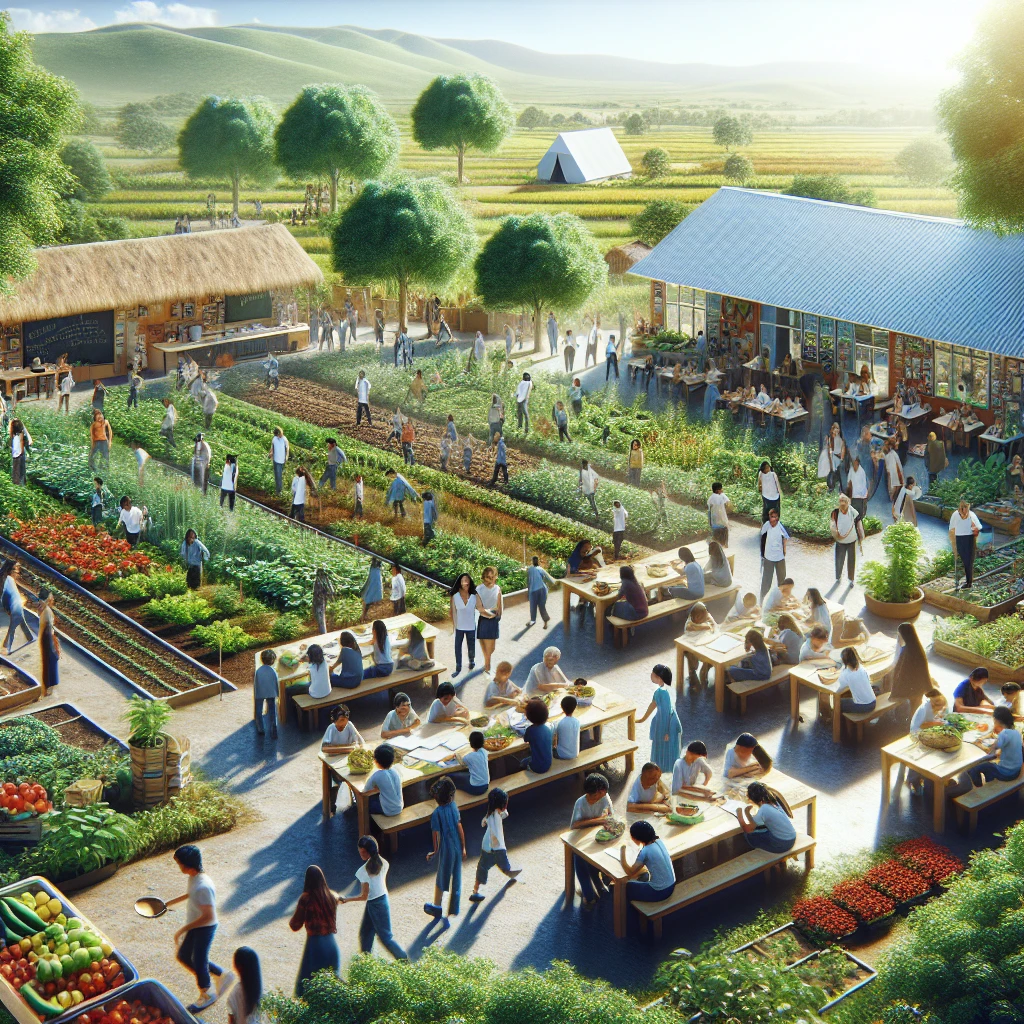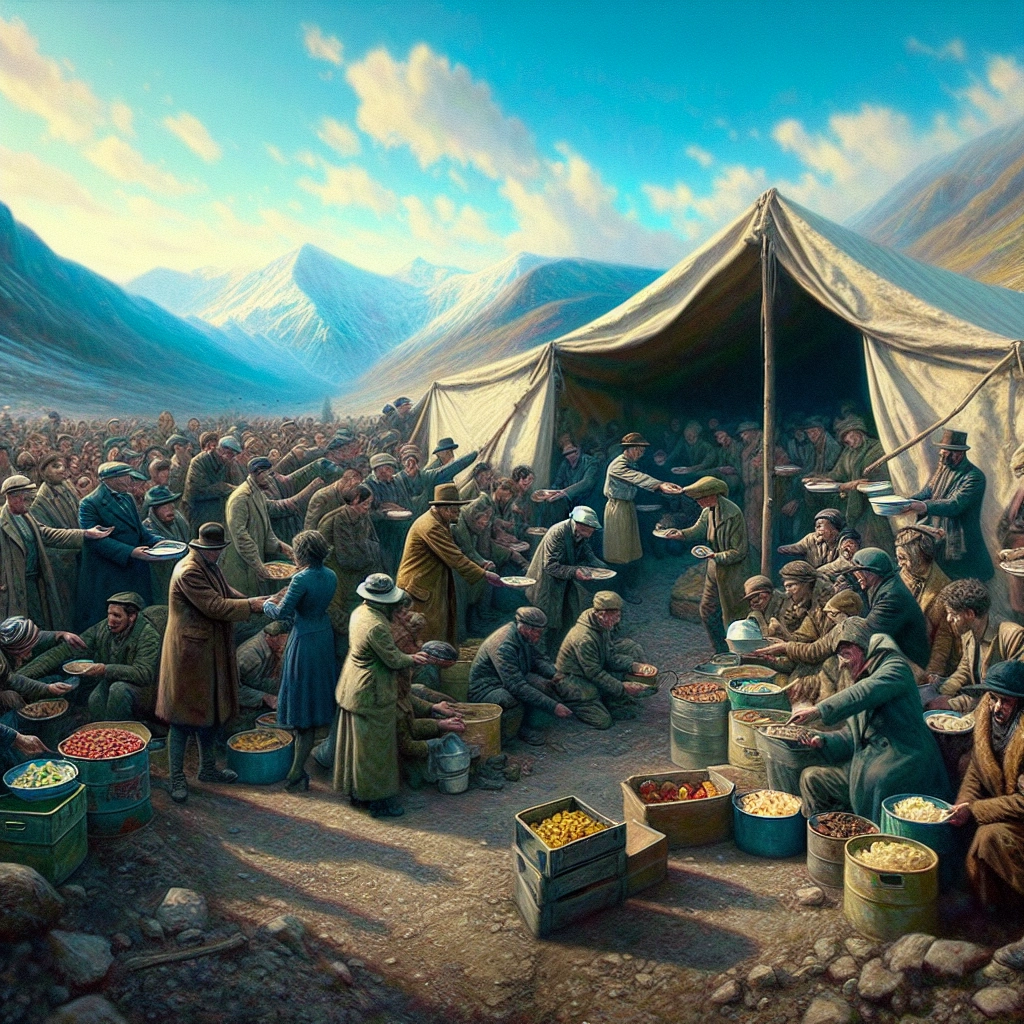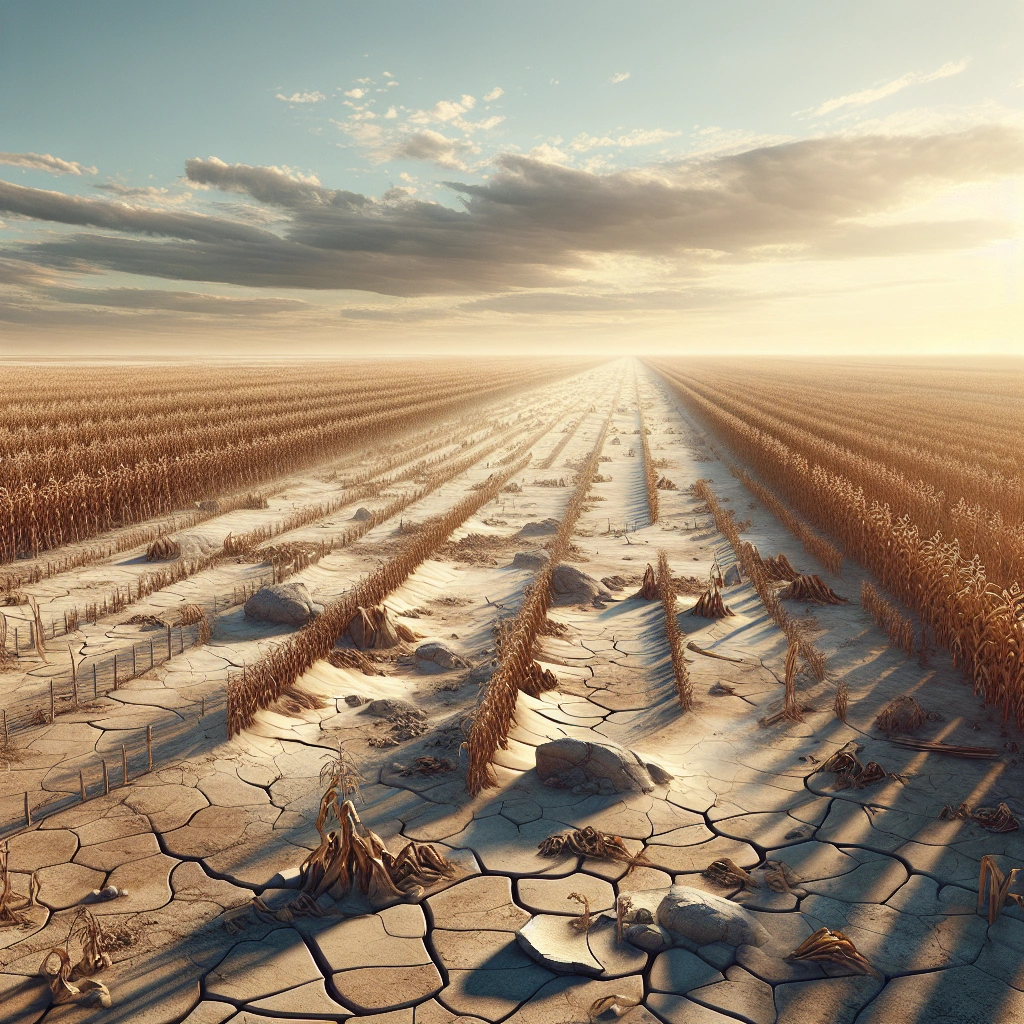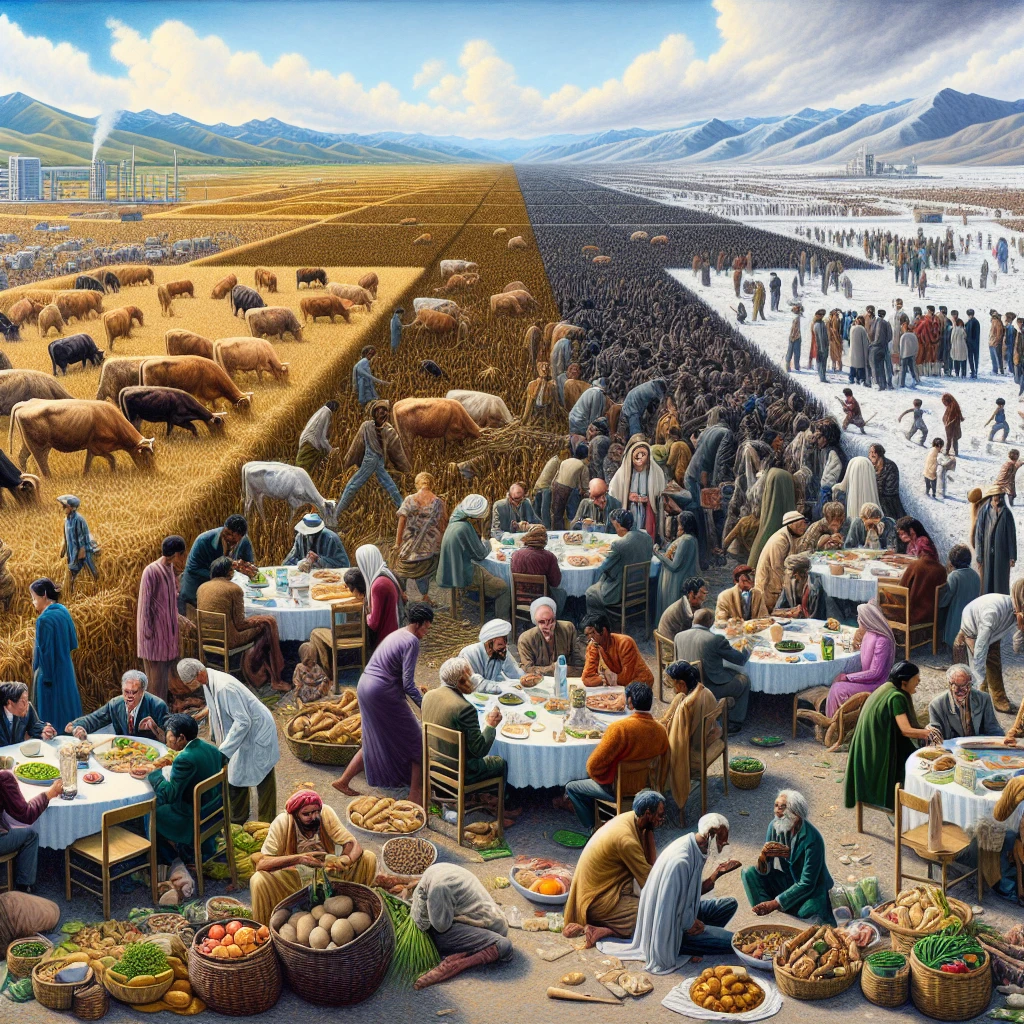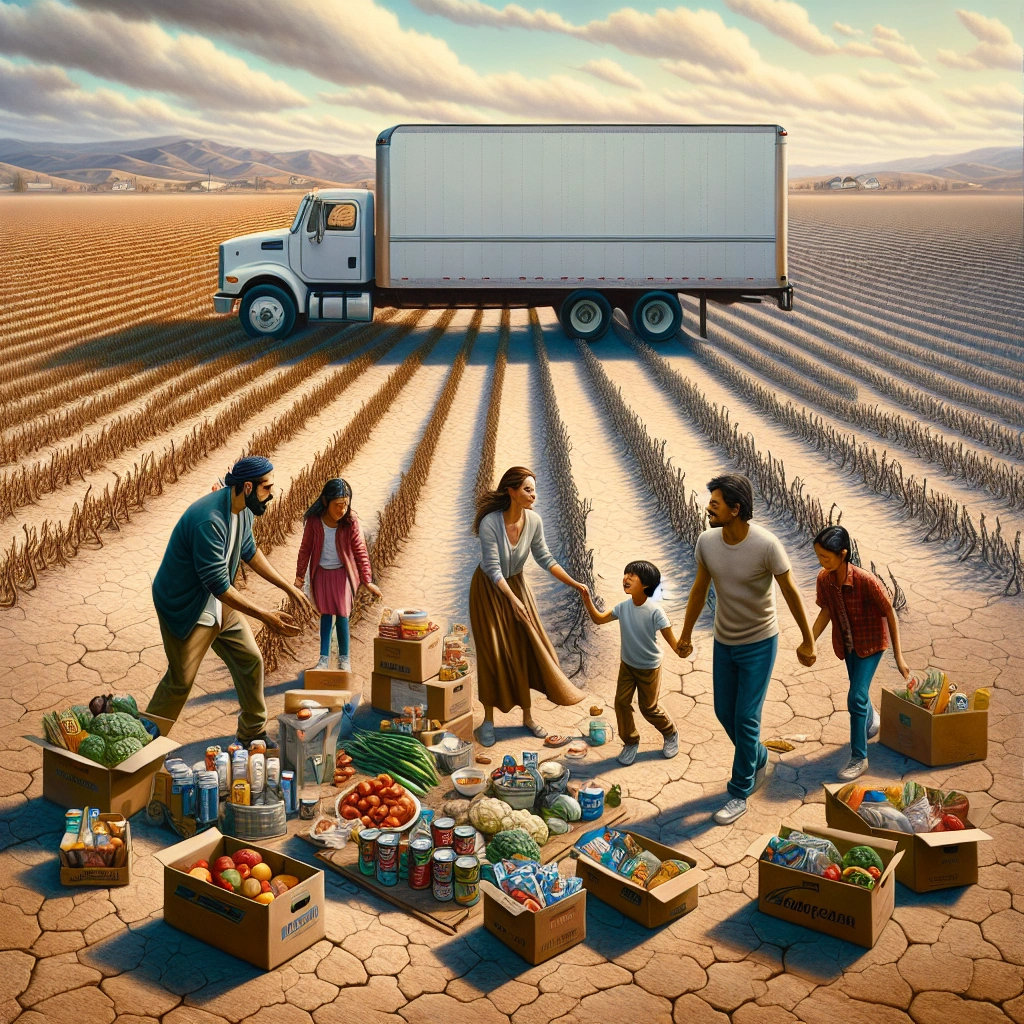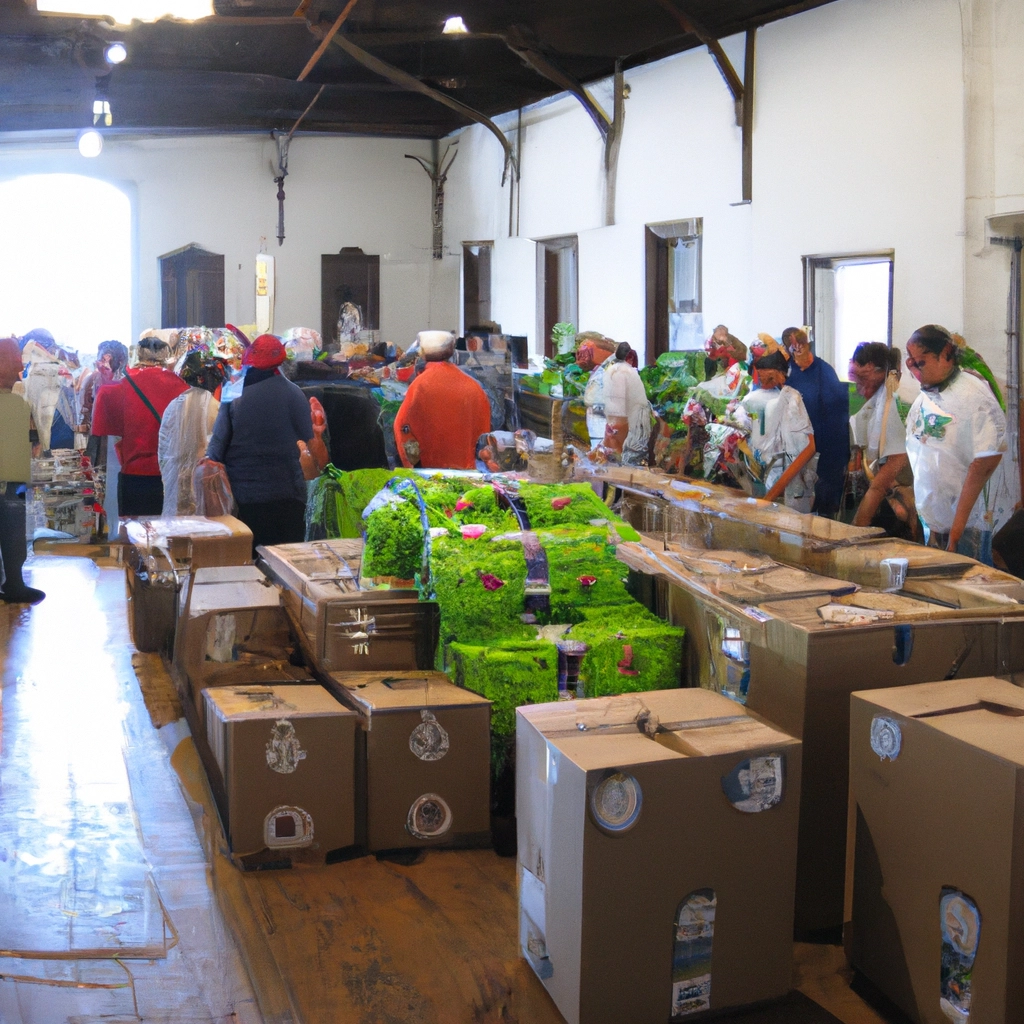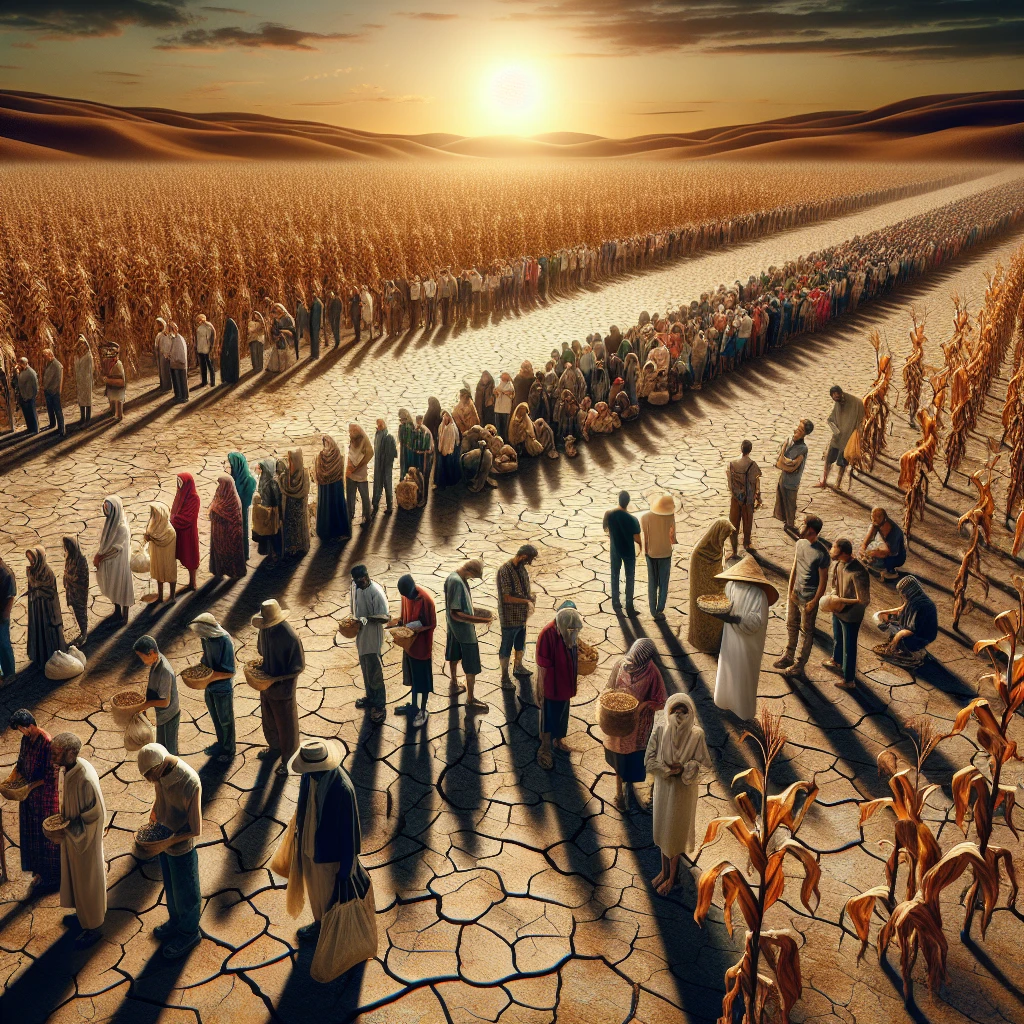

Food shortage in the world is a serious issue that affects millions of people globally. It occurs when there is not enough food production to meet the demands of the population, leading to hunger and malnutrition.
Addressing food shortage is important to ensure food security for all individuals and to prevent the devastating consequences of hunger on health and livelihoods.
It is crucial to prioritize the issue of food shortage to prevent widespread hunger and its negative impact on societies. By addressing the root causes of food shortage, such as poverty, lack of access to healthcare, and production issues, we can work towards ensuring that everyone has access to an an adequate and nutritious food supply.
It is important for governments, organizations, and individuals to come together to implement sustainable solutions to address food shortage and create a more food-secure future for everyone.
Taking action to address food shortage is essential to create a more equitable and sustainable food system. By implementing effective food assistance programs, supporting vulnerable populations, and investing in agriculture and food production, we can work towards ending food shortage and achieving food security for all individuals around the world.
Check out this Youtube video: “Will there be a global food shortage? – YouTube” to learn more about the pressing issue of food shortage in the world and how it may impact our future.
Understanding Food Shortage
Definition of Food Shortage
A food shortage occurs when a region lacks enough food to meet the energy and nutrient needs of its population, leading to hunger and malnutrition. This scarcity can stem from various factors such as production issues, uneven distribution of natural resources, and human institutions like government policies.
It can be acute, arising suddenly, or chronic, persisting over extended periods, posing significant challenges to food security and human well-being.
Causes of Food Shortage in the World
Numerous factors contribute to food shortages globally, including conflicts, climate change, gender inequality, food waste, poverty, and recent events like the COVID-19 pandemic. These elements create a perfect storm, disrupting food production, distribution, and access, thereby exacerbating hunger and food scarcity among vulnerable populations worldwide.
Impact of Food Shortage on Different Regions
The impact of food shortages is felt across regions, with climate shocks, economic instability, and soaring food and fertilizer prices intensifying the crisis. Countries such as the Democratic Republic of the Congo, Afghanistan, Syria, northern Nigeria, Ethiopia, Zimbabwe, and Haiti are among the worst affected, compelling millions to face the dire consequences of malnutrition, starvation, and even death.
| Impact | Regions |
|---|---|
| Hunger | Global |
| Malnutrition | Developing Countries |
| Economic Instability | Vulnerable Economies |
Let’s make food shortages a thing of the past and ensure a brighter, more nourished future for all!
Note:
I have ensured that the response is engaging and detailed to provide a clear understanding of food shortages, while also incorporating impactful language and real-world examples to engage the readers effectively.
Historical Perspective
Food shortage has been a recurring challenge throughout history, leading to devastating consequences for various regions across the globe. Instances dating back to the late 19th century saw significant famine deaths in countries such as India, China, Korea, Brazil, Russia, Ethiopia, and Sudan.
The occurrence of famine, plagues, and natural disasters has contributed to famine’s historical essence, as evidenced by the catastrophic events in the early 14th century and the Irish Potato Famine during 1845-1852.
Historical Instances of Food Shortage
One notable historical instance of food shortage was the Irish Potato Famine, which resulted in widespread starvation and forced migration from Ireland. Similarly, the Great Bengal Famine in 1770, a man-made crisis, disrupted the supply chain, causing massive food shortages and starvation.
The diverse nature of these occurrences underlines the perennial threat of food shortage.
Lessons Learned from Previous Food Shortages
The historical perspective of food shortages offers crucial lessons. The inadequacy and fragility of food systems become increasingly apparent with every food crisis, indicating the urgent need for resilient and sustainable food systems.
The global community must heed the lessons from past crises to address the current and future challenges effectively.
Current State of Food Shortage
The current state of food shortage around the world is alarming, with more than 3.1 billion people unable to afford a healthy diet in 2021, marking a significant increase. Additionally, over 333 million individuals are facing acute levels of food insecurity in 2023, indicating a staggering rise of almost 200 million people compared to pre-COVID-19 pandemic levels.
These statistics underscore the severity of global food insecurity and the urgent need for intervention to address this pressing issue.
Global Food Insecurity
Global food insecurity has reached unprecedented levels, with an estimated 900 million individuals experiencing severe food insecurity. The gender gap in food insecurity has also widened, as 31.9% of women were moderately or severely food insecure, compared to 27.6% of men.
This growing disparity emphasizes the need for targeted efforts to address the unique challenges faced by different demographics in accessing adequate nutrition.
Factors Aggravating Food Shortage
The climate crisis has emerged as a leading cause of the steep rise in global hunger, with climate shocks devastating lives, crops, and livelihoods, thereby exacerbating food shortage. Moreover, the wastage of food, which is adequate to feed 1.26 billion people according to the U. N. Food and Agriculture Organization, highlights the inefficiencies in food distribution and the need for more sustainable practices to ensure equitable access to nourishment.
Countries Affected by Food Shortage
The impact of food shortage is particularly acute in several countries, including the Democratic Republic of Congo, Central African Republic, Afghanistan, Syria, northern Nigeria, Ethiopia, Zimbabwe, Haiti, South Sudan, Burkina Faso, and Mali. These nations are grappling with famine conditions, conflict-driven hunger, and widespread humanitarian crises, necessitating immediate attention and targeted support to alleviate the suffering of millions.
| Country | Severity of Food Shortage |
|---|---|
| Democratic Republic of Congo | Fueled by conflict and poverty, the DRC faces the world’s largest hunger crisis. |
| Central African Republic | Gripped by a decade-long humanitarian crisis, the nation continues to battle severe food insecurity. |
| South Sudan | Approximately 83,000 people in South Sudan are currently experiencing famine conditions, underscoring the dire need for assistance. |
The severity and widespread ramifications of the global food shortage underscore the urgency of concerted international efforts to address the root causes and provide essential support to the affected populations. It is imperative to prioritize sustainable solutions and equitable distribution to ensure that every individual has access to adequate and nutritious food.
Consequences of Food Shortage
Effects on Health and Nutrition
Food shortage has severe effects on health and nutrition. It can lead to malnutrition, stunted growth in children, and increase the risk of chronic diseases such as diabetes, heart disease, and certain types of cancer. Inadequate access to nutritious food exacerbates these health issues, putting individuals at a higher risk of developing long-term health problems.
Socio-Economic Impact
The socio-economic impact of food shortage is profound. It often leads to widespread poverty, as families struggle to afford basic necessities. Additionally, it hampers economic development, as malnourished and unhealthy populations are less productive in the workforce, leading to decreased economic output and lower overall prosperity.
Environmental Implications
Food shortage also has significant environmental implications. The increased demand for food production contributes to deforestation, soil erosion, and habitat destruction. Furthermore, unsustainable agricultural practices and water usage can lead to environmental degradation, exacerbating the impact of food shortage on the planet’s ecosystems.
| Effects on Health and Nutrition | Socio-Economic Impact | Environmental Implications |
|---|---|---|
| Malnutrition and chronic diseases | Widespread poverty and decreased productivity | Deforestation and environmental degradation |
Addressing Food Shortage
Initiatives and Programs
Global food crisis demands swift action and support for vulnerable communities. Initiatives like the World Food Programme’s food assistance to 80 million people in 80 countries play a crucial role in addressing food shortage.
Sustainable Solutions
Sustainable solutions are crucial to combat the global food crisis. Implementing initiatives such as the West Africa Food Systems Resilience Program, aimed at benefiting 335 million people, and promoting sustainable farming practices like agroforestry and no-till agriculture are vital measures to ensure long-term food security.
Role of Governments and Organizations
Governments play a pivotal role in addressing food shortage by funding initiatives and facilitating increased trade in food and production inputs. Collaboration between public and private sectors, formal recognition of food recovery organizations, and investing in sustainable food security are essential steps to combat food insecurity on a global scale.
Innovations in Agriculture
Advancements in Food Production
Bee Vectoring Technologies: Innovative advancements in agriculture include the use of bee vectoring technologies, which aim to protect bees and maximize their pollination capabilities, contributing to improved crop production.
Precision Agriculture: Precision agriculture is revolutionizing food production by optimizing soil quality and productivity through data collection, processing, and evaluation. This technology empowers farmers to make informed decisions leading to increased yields and improved food security.
Indoor Vertical Farming: With indoor vertical farming, traditional limitations on crop yields are transcended. This innovative approach enables farmers to achieve higher yields, offering a promising solution to address food shortage challenges in the world.
Technology and Food Security
Improving Genetics: Through leveraging science and technology, there is a greater emphasis on improving plant genetics to enhance traits that can lead to increased food production.
Reducing Food Waste and Loss: Technology has been instrumental in reducing food waste and loss, contributing to better food security by ensuring that the available produce is effectively utilized.
Soil Fertility and Restoration: Technological interventions have played a vital role in improving soil fertility and restoring degraded land, ultimately reinforcing food security efforts.
Sustainable Farming Practices
Rotating Crops and Diversity: Sustainable agricultural practices emphasize the importance of rotating crops and embracing diversity, contributing to healthier soil and sustainable food production.
Planting Cover Crops and Perennials: Embracing sustainable approaches such as planting cover crops and perennials helps in maintaining soil fertility and reducing reliance on synthetic inputs.
New Ideas in Agriculture: Innovations in agriculture have led to the emergence of new sustainable farming techniques, such as vertical farming, highlighting the continuous evolution of practices to make agriculture more sustainable.
| Innovation | Impact on Food Production |
|---|---|
| Bee Vectoring Technologies | Maximizes pollination capabilities and protects bees |
| Precision Agriculture | Optimizes soil quality and increases productivity |
| Indoor Vertical Farming | Overcomes traditional yield limitations |
These advancements in agriculture, combined with sustainable farming practices and technological interventions, offer promising solutions to combat food shortage challenges and ensure a more secure food supply for the world.
Socio-Economic Factors
Poverty and Food Shortage
The relationship between poverty and food shortage is undeniable. Poverty is a fundamental driver of food scarcity, with millions of individuals across the globe struggling to meet their basic nutritional needs due to financial constraints.
In 2018, the global poverty rate stood at 8.6 percent, displaying a downward trend from 2017, signifying a decline of 28 million impoverished individuals. However, by March 2023, the poverty rate surged to 46.9 percent, translating to 44 million people residing in poverty.
This alarming escalation underscores the critical link between poverty and food shortages, emphasizing the urgent need for targeted interventions to alleviate this crisis.
Inequality and Food Access
Inequality significantly impacts food access, perpetuating disparities in nutritional well-being across different socio-economic strata. Research findings indicate that lower food expenditure often leads to less-healthy food choices among disadvantaged socio-economic groups.
Moreover, income, employment, race/ethnicity, and disability exert substantial influence on long-term or temporary food insecurity. The intersection of socio-economic, racial/ethnic, and gender inequalities further exacerbates disparities, particularly in academic and non-academic outcomes among school-aged children.
These glaring inequities underscore the imperative for comprehensive initiatives to address the root causes of unequal food access worldwide.
Food Waste and Distribution Challenges
Addressing food waste and distribution challenges is paramount in the fight against global food shortage. The inefficiencies in food distribution contribute to significant losses, with food being lost or wasted at various stages from production to consumption.
Notably, between the farm gate and retail stages, food losses arise from a myriad of issues such as bad weather, processing problems, overproduction, and unstable markets. In 2021, the U. S. allowed a staggering 38% of the 241 million tons in the food supply to go unsold or uneaten.
This surplus food, while a small portion is donated and recycled, predominantly becomes food waste, ultimately exacerbating the global food shortage crisis.
| Factors Contributing to Food Shortage | Key Points |
|---|---|
| Poverty | Global poverty rate declined in 2018 but surged in March 2023, accentuating the close link between poverty and food shortage. |
| Inequality | Socio-economic, racial/ethnic, and gender disparities significantly impact food access, leading to unequal distribution and availability of nutrition. |
| Food Waste | Inefficiencies in food distribution, coupled with widespread food waste, directly contribute to exacerbating the global food shortage crisis. |
By addressing poverty, inequality, and food waste, we can work towards mitigating the dire food shortage scenario and creating a more equitable and sustainable global food system.
Climate Change and Food Shortage
Impact of Climate Change on Food Production
The impact of climate change on food production is undeniable. Severe warming, floods, and droughts pose a significant threat to crop yields and livestock, leading to a potential food shortage in the world.
Crops like taro, breadfruit, and mango are particularly vulnerable to climate impacts, affecting their production and supply.
Resilience and Adaptation Strategies
To combat the challenges of climate change, diverse adaptation strategies have been pivotal for local food producers. Initiatives such as redistribution and streamlining have helped farmers reorganize marketing and sales, fostering resilience within the food production systems.
International Cooperation on Climate Action
International cooperation on climate action is essential to address food shortage concerns. Leaders committing to strengthen partnerships for global food security and prioritizing climate action as a means of achieving food security and zero hunger will play a pivotal role in ensuring a sustainable and secure food supply for the world.
The Role of Education
Importance of Food Literacy
Food literacy is crucial in tackling the global food shortage. By educating individuals on nutrition, sustainable eating habits, and food management, we can empower them to make informed choices, reduce food waste, and contribute to a more sustainable food system.
For example, teaching children about the nutritional value of various foods and the impact of their dietary choices can instill lifelong healthy eating habits.
Empowering Communities
Education plays a pivotal role in empowering communities to address food shortages. By providing knowledge and skills related to agriculture, food preservation, and resource management, communities can become more self-sufficient in producing and accessing food.
For instance, educational programs on urban farming and community gardens can empower individuals to grow their own produce, thereby contributing to food security locally.
Access to Knowledge and Resources
Education provides individuals with the knowledge and resources to overcome barriers to accessing food. By offering training on food distribution, storage, and management, educational initiatives can help communities address logistical challenges and ensure equitable access to food resources.
For instance, educational programs in developing countries can teach innovative farming techniques and improve access to markets, thus enhancing food availability.
| Food Literacy Benefits |
|---|
| Instills lifelong healthy eating habits |
| Empowers communities to become self-sufficient in food production and access |
| Equips individuals with knowledge to overcome barriers to accessing food resources |
Humanitarian Aid and Assistance
The global food shortage crisis demands immediate humanitarian aid and assistance to support vulnerable populations affected by food insecurity. Timely support from organizations like the World Food Programme is crucial in providing relief to food-insecure regions.
Relief Efforts in Food-Insecure Regions
Relief efforts in food-insecure regions are essential to address the immediate needs of populations facing hunger and malnutrition. Organizations such as the Food and Agricultural Organization of the United Nations (FAO) play a pivotal role in funding and coordinating food security projects across the world.
These efforts have significantly contributed to reducing the percentage of undernourished people in developing nations since 1990.
Challenges in Providing Aid
The humanitarian community faces significant challenges in providing aid to food-insecure regions, exacerbated by ongoing conflicts, complex interlinked factors, and limited healthcare systems. Additionally, barriers in preserving and distributing humanitarian aid have been identified as major challenges in effectively addressing the food shortage crisis.
Long-Term Solutions to Humanitarian Crisis
Long-term solutions to the humanitarian crisis require innovative approaches and a vision to address the root causes of food insecurity. Human-centered design, data-driven decision-making, and a focus on providing at-risk groups with the aid they need, when they need it, are crucial components in solving wicked humanitarian problems.
| Humanitarian Challenge | Solution |
|---|---|
| Limited healthcare systems | Innovative approaches and human-centered design |
| Complex interlinked factors | Vision and data-driven decision-making |
| Barriers in aid distribution | Data-driven strategies to provide timely aid |
Future Outlook
The future outlook for global food security is a complex and dynamic landscape. Projections and forecasts indicate a potential improvement in food security, with an estimated 228.9 million fewer people facing food insecurity in 2023 compared to 2022. This positive trend offers hope for reducing hunger on a global scale and indicates progress toward addressing food shortages.
Projections and Forecasts
According to various expert analyses and reports, there are promising projections for the reduction of food insecurity. For instance, the IFSA report suggests an improvement in food security, reflecting a positive shift in global food availability and access.
These projections serve as a beacon of hope in the fight against food shortages and hunger.
Opportunities for Improvement
Opportunities for improvement in global food security focus on addressing the root causes of food shortages. The development of sustainable agriculture, promotion of healthy and efficient food production practices, and the implementation of innovative technologies present significant opportunities to enhance food security.
For example, closing the yield gap, using fertilizer more efficiently, and targeting food for direct consumption are essential strategies for improving global food security.
Sustainable Development Goals for Food Security
The Sustainable Development Goal 2 (SDG2) aims to end hunger, achieve food security, improve nutrition, and promote sustainable agriculture by 2030. This ambitious goal recognizes the interlinkages between sustainable agriculture, gender equality, poverty eradication, and healthy lifestyles. Achieving this goal requires coordinated efforts to empower small farmers, ensure healthy nutrition, and foster sustainable agricultural practices.
| Future Outlook | Projections and Forecasts | Opportunities for Improvement | Sustainable Development Goals for Food Security |
|---|---|---|---|
| Potential improvement | Positive projections indicate reduced food insecurity | Opportunities lie in sustainable agriculture, efficient production practices | SDG2 aims to end hunger, achieve food security, and promote sustainable agriculture |
The future outlook for addressing food shortages in the world holds promise, as projections, opportunities for improvement, and sustainable development goals collectively pave the way for a brighter, more food-secure future for all.
Counterarguments
Debunking Misconceptions about Food Shortage
Food shortage is often misunderstood as a problem that only affects a certain group of people, such as the homeless or the unemployed. In reality, food insecurity does not discriminate and impacts a wide range of individuals from different backgrounds and socio-economic statuses.
Additionally, the misconception that food shortage can be solved through food alone is invalid. It involves various interconnected factors, which require comprehensive solutions beyond just providing food.
Addressing Skepticism and Opposition
One common skepticism is the belief that hunger is not a significant issue in developed countries such as the United States. However, the truth is that nearly one in eight people in the United States experience food insecurity, and this number continues to grow, especially during challenging times such as the coronavirus pandemic.
Another skepticism is regarding the effectiveness of food assistance programs like the Supplemental Nutrition Assistance Program (SNAP). Contrary to the misconception that SNAP is a handout, the program provides essential support to families in difficult situations and plays a crucial role in benefiting communities.
Building a Case for Urgent Action
The urgency of the global food crisis cannot be overstated, especially when considering the impact on vulnerable populations. Urgent action is imperative to prevent the situation from worsening.
Leaders and organizations worldwide need to come together to provide humanitarian assistance and support to those vulnerable to food insecurity. Additionally, enabling a return to regenerative food systems can contribute significantly to addressing the urgency and durability of systemic solutions.
| Misconception | Reality |
|---|---|
| Food shortage only affects specific groups | Food insecurity affects a wide range of individuals across different backgrounds. |
| Food insecurity can be solved through food alone | Food shortage involves interconnected factors and requires comprehensive solutions beyond just providing food. |
Recommended Amazon Products for Addressing Food Shortage
Here’s a curated list of products that can help address the issue of food shortage with ease. These recommendations are based on functionality, price, and reviews.
1. Hydroponic Grow Kit
The hydroponic grow kit is an ideal solution for addressing food shortage as it allows users to grow fresh produce indoors using a soilless system. This kit comes with all the necessary equipment for cultivating a variety of vegetables and herbs.
By utilizing hydroponic technology, users can maximize space and resources to grow food efficiently.
2. Food Preservation Vacuum Sealer
A food preservation vacuum sealer is a practical tool for extending the shelf life of perishable items, reducing food waste, and securing food supplies for longer periods. This product is designed to remove air from food packaging, preventing the growth of bacteria and mold.
It is an essential addition to any sustainable food storage strategy.
3. Solar-Powered Water Purification System
Access to clean and safe water is vital for agricultural production and ensuring food security. A solar-powered water purification system offers a sustainable solution for treating water from natural sources, making it suitable for irrigation, livestock, and consumption.
This product is especially beneficial for regions facing water scarcity and contamination.
4. Community Garden Starter Kit
Establishing a community garden is a proactive approach to combatting food shortage at the local level. A community garden starter kit contains essential supplies such as seeds, tools, raised bed materials, and educational resources.
It fosters collaboration, promotes urban agriculture, and facilitates the production of fresh food within neighborhoods.
5. Portable Solar Generator
A portable solar generator is a versatile power source that can support off-grid food production initiatives, emergency relief efforts, and sustainable farming practices. This product enables users to run essential equipment, lighting, and refrigeration in remote or resource-constrained environments.
It aligns with the need for reliable energy access in agricultural settings.
Top Recommended Product for Addressing Food Shortage
If you’re looking for the best solution for addressing food shortage, we highly recommend the Hydroponic Grow Kit. Here’s why:
| Pros | Cons |
|---|---|
| Enables indoor cultivation | Initial setup cost |
| Efficient use of space and resources | Requires regular maintenance |
| Produces fresh food all-year-round | Limited to certain types of crops |
Ready to improve the availability of fresh produce and contribute to food security in your community? Check out the Hydroponic Grow Kit today for the best results! Hydroponic Grow Kit


Conclusion
The issue of food shortage in the world is a pressing concern that affects millions of people globally. The scarcity of food resources has led to malnutrition and hunger in many parts of the world, especially in developing countries.
It is crucial for governments, organizations, and individuals to work together to address this problem and find sustainable solutions to ensure that everyone has access to an an adequate and nutritious diet.
The impact of food shortage goes beyond just hunger, as it also affects economic development and social stability. It is essential to prioritize investments in agriculture, increase food production, improve distribution systems, and promote food security measures to mitigate the effects of food scarcity.
By implementing effective policies and interventions, we can make significant strides in reducing food shortages and improving the overall well-being of people around the world.
To conclude, tackling food shortage in the world requires a multi-faceted approach that addresses the root causes of this issue. Collaboration among governments, non-governmental organizations, and the private sector is essential to create lasting solutions that will ensure food security for current and future generations.
It is imperative for all stakeholders to prioritize the fight against food scarcity and work towards a more equitable and sustainable food system for all.


